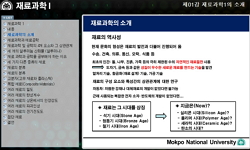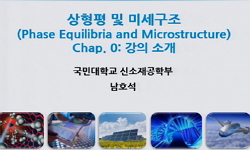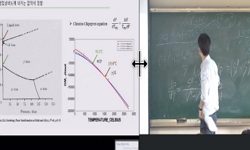Influence of calcined temperatures on the microstructure and electrochemical properties of LiFePO4/C nano-particles as well as it’s thermal stability were studied using HRTEM, XRD, electrochemical workstation and TGA. The results indicated that when...
http://chineseinput.net/에서 pinyin(병음)방식으로 중국어를 변환할 수 있습니다.
변환된 중국어를 복사하여 사용하시면 됩니다.
- 中文 을 입력하시려면 zhongwen을 입력하시고 space를누르시면됩니다.
- 北京 을 입력하시려면 beijing을 입력하시고 space를 누르시면 됩니다.



Influence of calcined temperatures on the microstructure and electrochemical properties of LiFePO4/C nano-particles with a core-shell structure and It’s thermal stability study
한글로보기https://www.riss.kr/link?id=A105238248
-
저자
Pengzhao Gao (Hunan University) ; Bing Yan (Hunan University) ; Ling Wang (Hunan University) ; Wei Liu (Tsinghua University) ; Weiwei Gong (Hunan University) ; Xiao-pan Liu (Hunan University)
- 발행기관
- 학술지명
- 권호사항
-
발행연도
2015
-
작성언어
English
- 주제어
-
등재정보
KCI등재,SCIE,SCOPUS
-
자료형태
학술저널
-
수록면
137-145(9쪽)
-
KCI 피인용횟수
2
- DOI식별코드
- 제공처
-
0
상세조회 -
0
다운로드
부가정보
다국어 초록 (Multilingual Abstract)
Influence of calcined temperatures on the microstructure and electrochemical properties of LiFePO4/C nano-particles as well as it’s thermal stability were studied using HRTEM, XRD, electrochemical workstation and TGA. The results indicated that when calcined at 973 K, the LiFePO4/C nano-particles consisted of a well-crystalline LiFePO4 core with size of 58.6-80.1 nm and an amorphous carbon shell with thickness of 2 nm. With the increase of calcined temperature, the electrochemical properties of LiFePO4/C materials increased first and then decreased, it reached maximum when temperature equaled to 973 K. The initial discharge capacity of the sample was 142 mAh/g, the discharge capacity of it maintained 132 mAh/g with capacity retention of 93.0% after 40 cycles. The decomposition reaction of LiFePO4/C material calcined at 973 K occurred at 938.38- 1194.52 K under 10 K • min−1 in N2 atmosphere and corresponded to approximately 5.8% of the total weight. The decomposition mechanism of it consisted of three stages: the first stage was controlled by gas diffusion in carbon shell; the second stage was controlled by chemical reaction and gas diffusion; the third stage was controlled by chemical reaction
참고문헌 (Reference)
1 R. Dedryvere, "X-ray photoelectron spectroscopy investigations of carbon-coated LixFePO4 materials" 20 : 7164-7170, 2008
2 M.R. Yang, "The doping effect on the electrochemical properties of LiFe0.95M0.05PO4(M =Mg2+, Ni2+, Al3+, or V3+) as cathode materials for lithium-ion cells" 155 : A729-A732, 2008
3 H. J. Kim, "Synthesis of LiFePO4/C cathode materials through an ultrasonic-assisted rheological phase method" 509 : 5662-5666, 2011
4 X. H. Liu, "Synthesis of LiFePO4/C by solidliquid reaction milling method" 197 : 309-313, 2010
5 K. R. Yang, "Synthesis and characterization of LiFePO4 and LiFePO4/C cathode material from lithium carboxylic acid and Fe3+" 201 : 274-279, 2012
6 Q. Zhang, "Structural and electrochemical properties of Nd-doped LiFePO4/C prepared without using inert gas" 191 : 40-44, 2011
7 S. Vyazovkin, "Reply to ‘‘What is meant by the term ‘variable activation energy’ when applied in the kinetics analyses of solid state decompositions (crystolysis reactions)?’’" 397 : 269-271, 2003
8 E. Markevich, "Raman spectroscopy of carbon-coated LiCoPO4 and LiFePO4 olivines" 196 : 6433-6439, 2011
9 P. Z. Gao, "Preparation and Electrochemical Properties of Nano LiFePO4/C with a Core-shell Structure through Modified In-Situ Restriction Polymerization Method" 41 : 201-204, 2012
10 G. L. Huang, "Polyvinylpyrrolidone (PVP) assisted synthesized nano-LiFePO4/C composite with enhanced low temperature performance" 97 : 92-98, 2013
1 R. Dedryvere, "X-ray photoelectron spectroscopy investigations of carbon-coated LixFePO4 materials" 20 : 7164-7170, 2008
2 M.R. Yang, "The doping effect on the electrochemical properties of LiFe0.95M0.05PO4(M =Mg2+, Ni2+, Al3+, or V3+) as cathode materials for lithium-ion cells" 155 : A729-A732, 2008
3 H. J. Kim, "Synthesis of LiFePO4/C cathode materials through an ultrasonic-assisted rheological phase method" 509 : 5662-5666, 2011
4 X. H. Liu, "Synthesis of LiFePO4/C by solidliquid reaction milling method" 197 : 309-313, 2010
5 K. R. Yang, "Synthesis and characterization of LiFePO4 and LiFePO4/C cathode material from lithium carboxylic acid and Fe3+" 201 : 274-279, 2012
6 Q. Zhang, "Structural and electrochemical properties of Nd-doped LiFePO4/C prepared without using inert gas" 191 : 40-44, 2011
7 S. Vyazovkin, "Reply to ‘‘What is meant by the term ‘variable activation energy’ when applied in the kinetics analyses of solid state decompositions (crystolysis reactions)?’’" 397 : 269-271, 2003
8 E. Markevich, "Raman spectroscopy of carbon-coated LiCoPO4 and LiFePO4 olivines" 196 : 6433-6439, 2011
9 P. Z. Gao, "Preparation and Electrochemical Properties of Nano LiFePO4/C with a Core-shell Structure through Modified In-Situ Restriction Polymerization Method" 41 : 201-204, 2012
10 G. L. Huang, "Polyvinylpyrrolidone (PVP) assisted synthesized nano-LiFePO4/C composite with enhanced low temperature performance" 97 : 92-98, 2013
11 A.K. Padhi, "Phospho-olivines as positive electrode materials for rechargeable lithium batteries" 144 : 1188-1194, 1997
12 P.S. Herle, "Nano-network electronic conduction in iron and nickel olivine phosphates" 3 : 147-152, 2004
13 Y. Wanga, "Morphology control and electrochemical properties of nanosize LiFePO4 cathode material synthesized by co-precipitation combined with in situ polymerization" 509 : 1040-1044, 2011
14 Jean-Frédéric Martin, "More on the reactivity of olivine LiFePO4 nano-particles with atmosphere at moderate temperature" 196 : 2155-2163, 2011
15 S. Vyazovkin, "Model-free and model-fitting approaches to kinetic analysis of isothermal and nonisothermal data" 340-341 : 53-68, 1999
16 S. Vyazovkin, "Isoconversional analysis of calorimetric data on nonisothermal crystallization of a polymer melt" 107 : 882-888, 2003
17 F. Teng, "In situ growth of LiFePO4 nanorod arrays under hydrothermal condition" 12 : 952-955, 2010
18 D. Patil, "Highly sensitive and selective LPG sensor based on a-Fe2O3 nanorods" 152 : 299-306, 2011
19 M. Vujkoviæ, "Gelcombustion synthesis of LiFePO4/C composite with improved capacity retention in aerated aqueous electrolyte solution" 92 : 248-256, 2013
20 Ling-Bin Kong, "Fabrication of promising LiFePO4/C composite with a core-shell structure by a moderate in situ carbothermal reduction method" 70 (70): 19-24, 2012
21 J.K. Kima, "Enhancement of electrochemical performance of lithium iron phosphate by controlled sol-gel synthesis" 53 : 8258-8264, 2008
22 K. Zaghib, "Enhanced thermal safety and high power performance of carbon-coated LiFePO4 olivine cathode for Li-ion batteries" 219 : 36-44, 2012
23 Z. Q. Jiang, "Effects of carbon content on the electrochemical performance of LiFePO4/C core/shell nanocomposites fabricated using FePO4/polyaniline as an iron source" 537 : 308-317, 2012
24 Pier Paolo Prosini, "Effect of the synthesis conditions on the electrochemical properties of LiFePO4obtained from NH4FePO4" 48 : 3438-3344, 2013
25 Sijiang Hu, "Effect of different binders on electrochemical properties of LiFePO4/C cathode material in lithium ion batteries" 237 : 497-502, 2014
26 X. D. Wang, "Effect of carbon content and calcination temperature on the electrochemical performance of lithium iron phosphate/carbon composites as cathode materials for lithium-ion batteries" 23 : 593-598, 2013
27 L. Aldon, "Determination of the Lamb-Mössbauer factors of LiFePO4 and FePO4 for electrochemical in situ and operando measurements in Li-ion batteries" 183 : 218-222, 2010
28 W. W. Gong, "Characterization and oxidation properties of biomorphic porous carbon with SiC gradient coating prepared by PIP method" 37 : 1739-1746, 2011
29 M. Maccario, "Ccontaining LiFePO4 materials-Part II: Electrochemical characterization" 179 : 2383-2389, 2008
30 W.X. Peng, "A novel sol-gel method based on FePO4• 2H2O to synthesize submicrometer structured LiFePO4/C cathode material" 196 : 2841-2847, 2011
31 J. H. Hong, "A new approach to LiFePO4/C synthesis: The use of complex carbon source without ball milling" 133 : 573-577, 2012
32 N. Suzuki, "A lithium phosphorous oxynitride (LiPON) film sputtered from unsintered Li3PO4 powder target" 191 : 49-54, 2011
동일학술지(권/호) 다른 논문
-
Scintillation properties of the Gd3Al2Ga3O12 : Ce crystal
- 한양대학교 세라믹연구소
- 김혜림
- 2015
- KCI등재,SCIE,SCOPUS
-
- 한양대학교 세라믹연구소
- Melvin John F. Empizo
- 2015
- KCI등재,SCIE,SCOPUS
-
A review of preparation techniques of porous ceramic membranes
- 한양대학교 세라믹연구소
- Peng Wu
- 2015
- KCI등재,SCIE,SCOPUS
-
STM observation of initial stage of growth of Si-Mn films on Si(111)7 × 7 surface
- 한양대학교 세라믹연구소
- Atsushi Yokotani
- 2015
- KCI등재,SCIE,SCOPUS
분석정보
인용정보 인용지수 설명보기
학술지 이력
| 연월일 | 이력구분 | 이력상세 | 등재구분 |
|---|---|---|---|
| 2023 | 평가예정 | 해외DB학술지평가 신청대상 (해외등재 학술지 평가) | |
| 2022-10-24 | 학회명변경 | 한글명 : 세라믹연구소 -> 청정에너지연구소영문명 : Ceramic Research Institute -> Clean-Energy Research Institute |  |
| 2020-01-01 | 평가 | 등재학술지 유지 (해외등재 학술지 평가) |  |
| 2019-08-19 | 학회명변경 | 한글명 : 세라믹공정연구센터 -> 세라믹연구소영문명 : Ceramic Processing Research Center -> Ceramic Research Institute |  |
| 2011-01-01 | 평가 | 등재학술지 유지 (등재유지) |  |
| 2006-01-01 | 평가 | SCI 등재 (등재후보1차) |  |
| 2003-01-01 | 평가 | 등재후보학술지 선정 (신규평가) |  |
학술지 인용정보
| 기준연도 | WOS-KCI 통합IF(2년) | KCIF(2년) | KCIF(3년) |
|---|---|---|---|
| 2016 | 0 | 0 | 0 |
| KCIF(4년) | KCIF(5년) | 중심성지수(3년) | 즉시성지수 |
| 0 | 0 | 0 | 0 |




 KCI
KCI





